As various elements for the latest RIDE Media project bike arrive, we will offer an overview of what is being used and why. In this ‘episode’ of the Cervélo Caledonia review, it’s time to talk about tyre selection… the choice is made and it’s Pirelli Cinturato 32mm.
#ProjectCaledonia: Introduction • Explanation & wheels, unboxing
As part of this bike build, I’ll be adopting some recent trends in cycling. Sometimes it will be because I know it makes sense, other times it could be just for curiosity. And there may be instances when, despite my gut instinct urging to go with something I know, I’ll capitulate to contemporary options to see if I may become a convert.
Tyre choice is a fine example. I’ve been happy enough with the high-pressure, narrow tyres for years… but I’m coming around to the idea of wider tyres with less pressure than traditionalists would ever have believed would be employed for road cycling.
If you’ve follow RIDE Media in 2020, you’d have seen my experiment with the Trek Emonda review bike; it came with 25mm tyres, and Trek suggest nothing bigger than 28mm… but I put 32mm Continental GP5000s on. They fit (just) and, in my appraisal, improved the ride characteristics.
 |
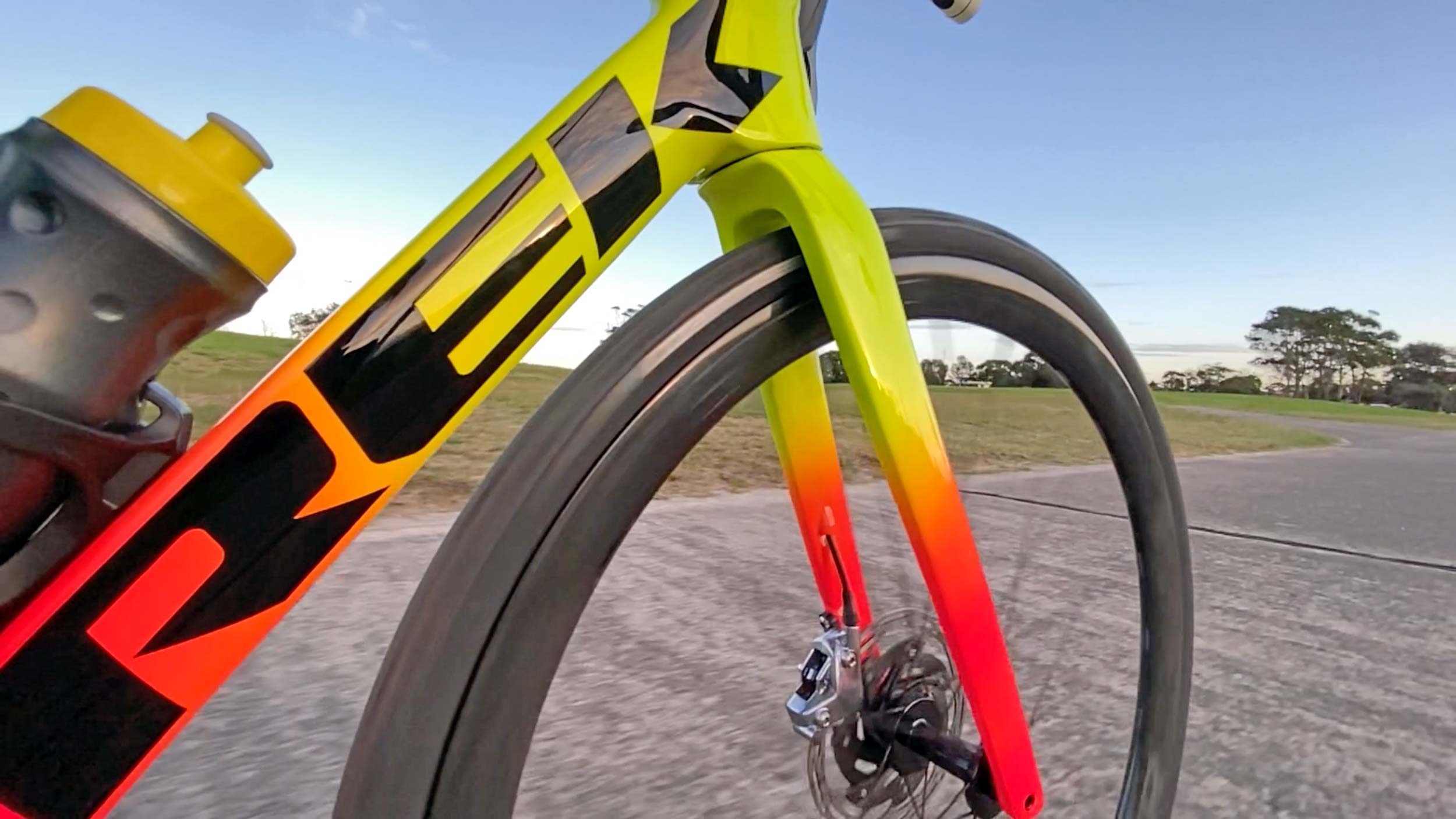 |
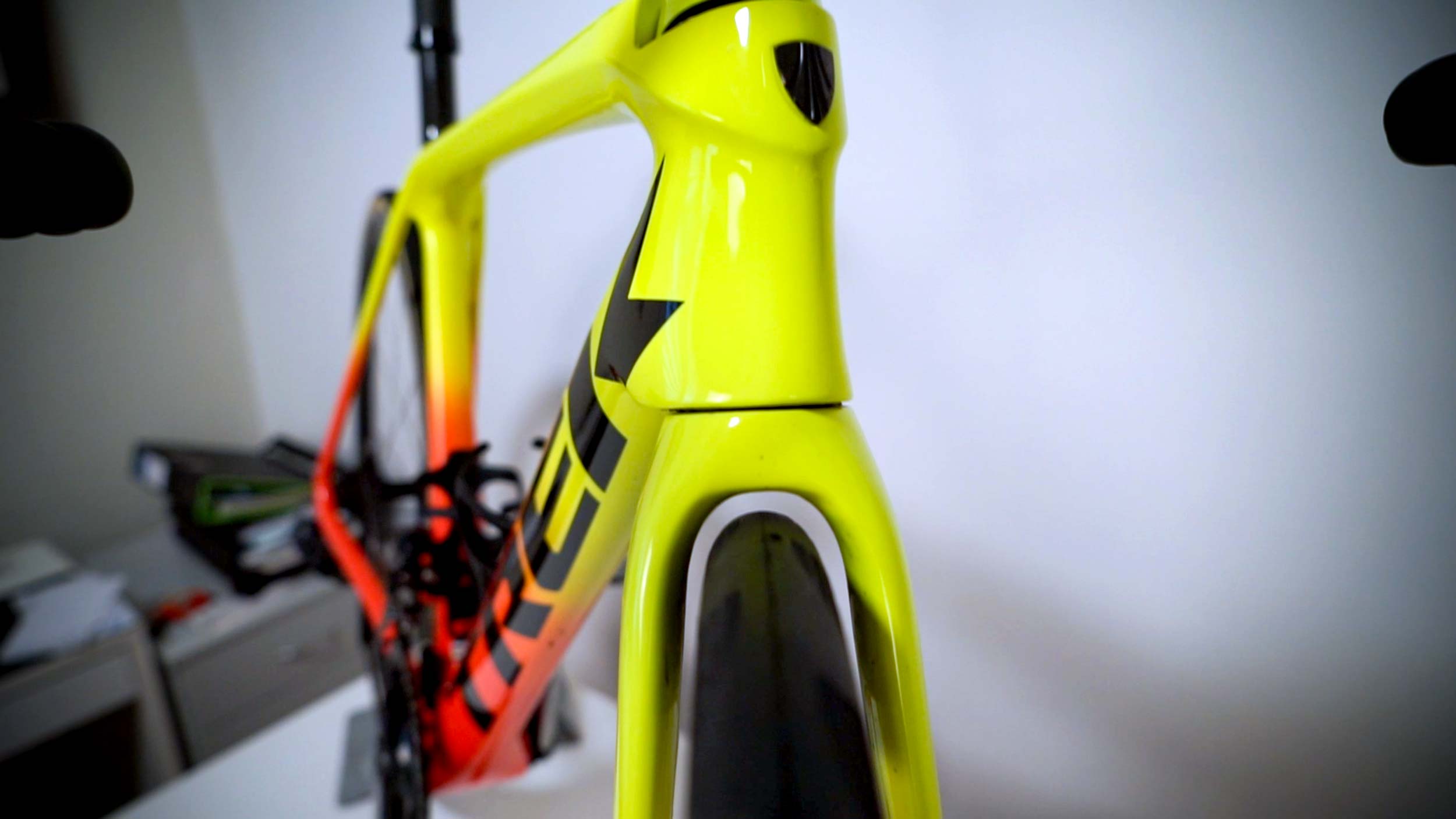 |
– See links at bottom of page for related features by RIDE Media –
Another big change that the industry seems to be demanding (or at least politely requesting be adopted by the consumer) is tubeless tyres. This is old news in the MTB market but road cyclists are more coy about the idea. If you have tried it in the past and didn’t have a great experience, fear not… things have changed quite dramatically in 2020.
Wheel and tyre manufacturers are collaborating and, with an air compressor in the workshop, fitting tubeless tyres to wheels is much easier than it was only a few years ago.
At the start of the year, several WorldTour team mechanics told me that the intention for 2020 was to race tubeless tyres exclusively this season. UAE Team Emirates and EF Pro Cycling, for example, were impressed with improvements by their product suppliers and they were excited about the change in approach.
The wheel selection for the #ProjectCaledonia review bike is Zipp 303s; the company kindly loaned RIDE Media a set of ‘media wheels’ but asked, “can you please use tubeless?” With hookless rims, they are meant to only be used with a tubeless arrangement (although we know some riders who have banged a tube inside rather than sealant and, so far at least, haven’t had any dramas).
Still, I’m respecting the request and have gone with sealant. (More on that later.)
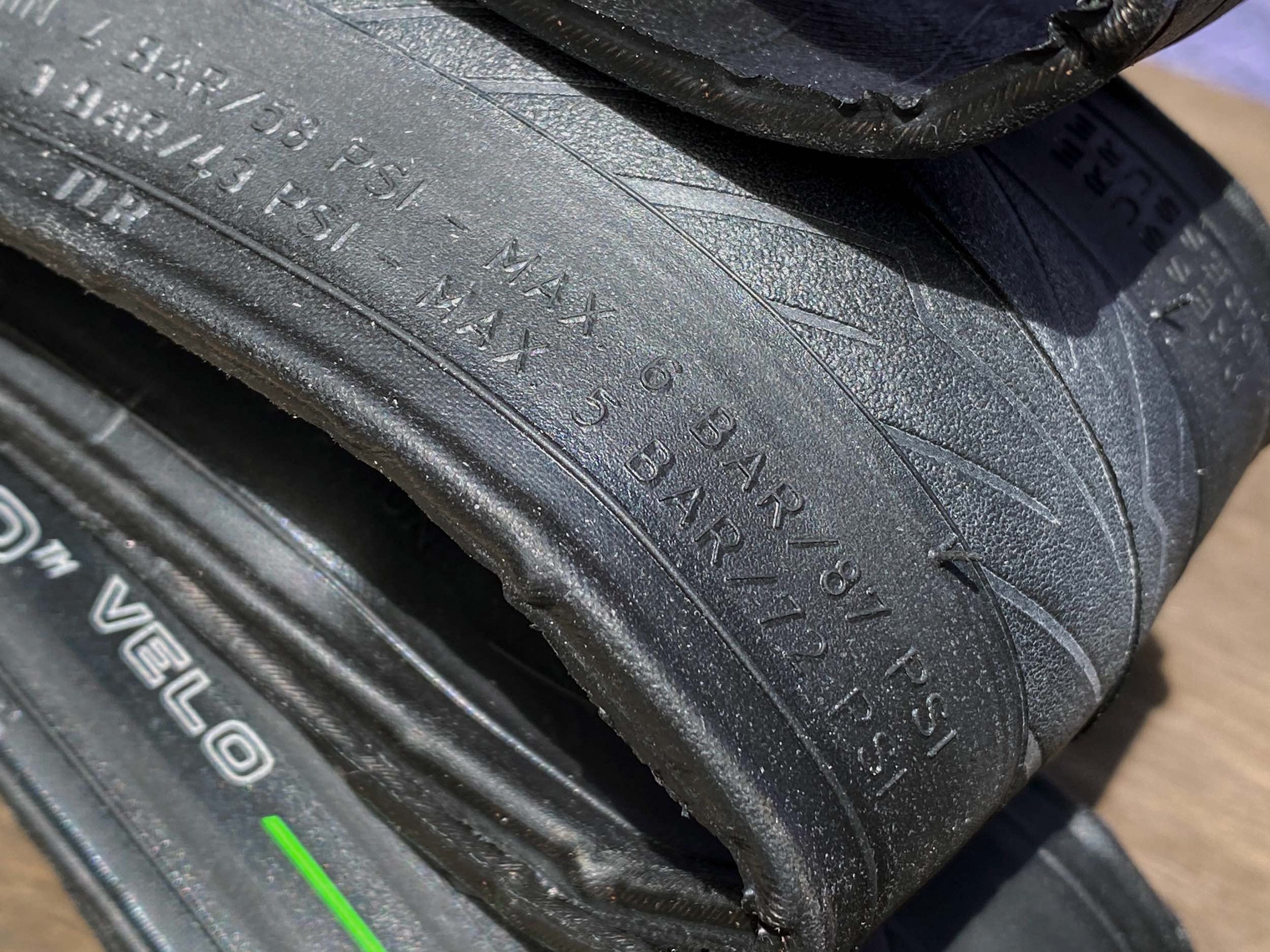
That’s right: “max pressure” 87psi with tubes, 72psi for tubeless.
A wealth of choice
Another big change in recent years is the arrival of a glut of new tyre brands. Furthermore, these companies have to try and second-guess what riders want in 2020, a time when there’s more choice than ever before.
As the Cervélo Caledonia frame can cater for tyres as wide as 34mm, it seems obvious to select something large… but not excessively so, something that suits the bike and my riding needs, something that is contemporary, and something that exploits new technologies.
With all that in mind, the choice was made and Pirelli’s Cinturato tyres have been selected.
The Pirelli Cinturato tyres for #ProjectCaledonia will be 32mm and tubeless. In Australia these retail for $94.99. (The distribution agent is FE Sports.)
The claimed weight for this size (tyre alone, not counting sealant of course) is 350g each, quite a bit heavier than narrower options but there’s quite a bit of tech included in the hope of minimising the risk of punctures.
Pirelli Cinturato tyres come in four widths: 26mm, 28mm, 32mm (selected) and 35mm.
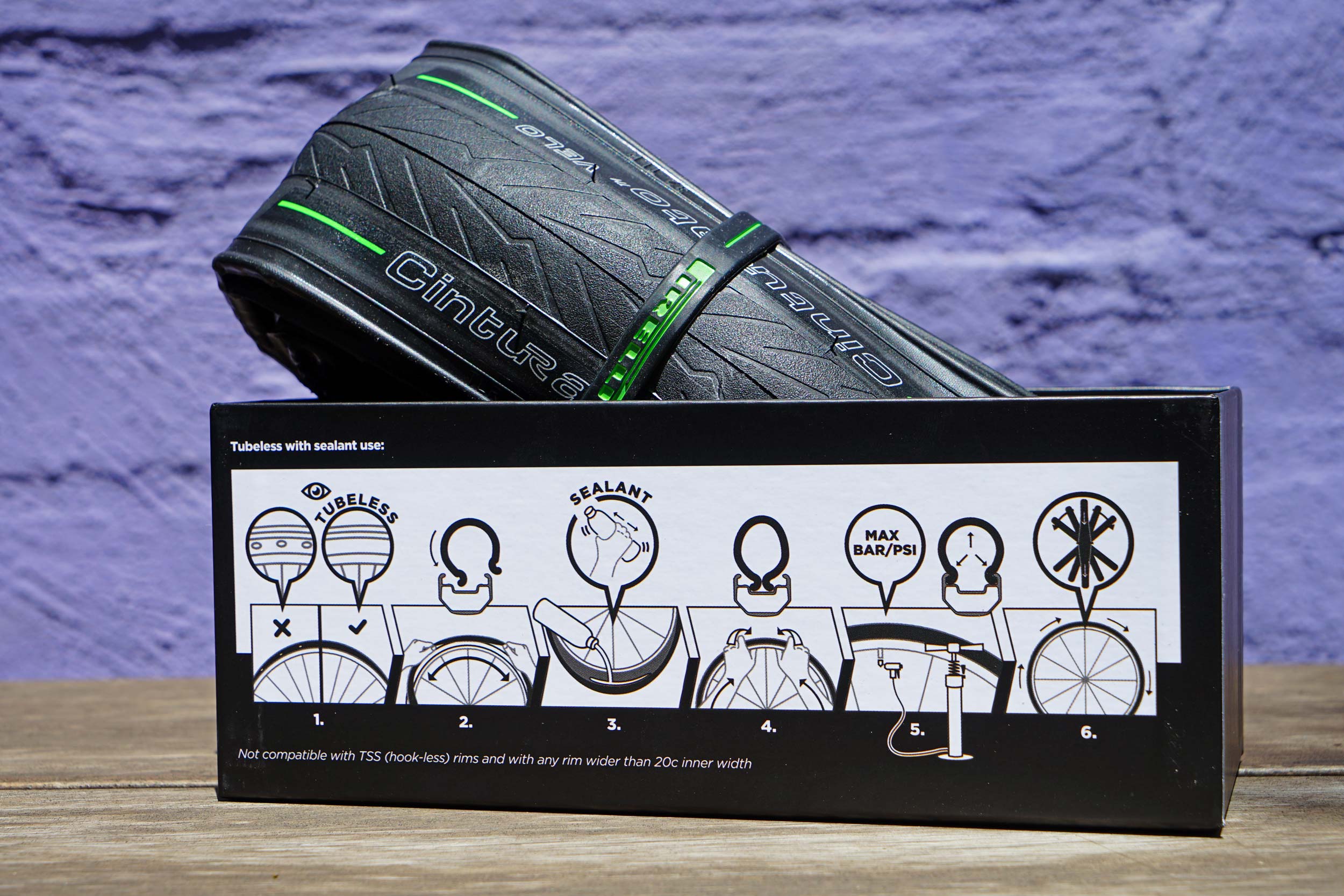
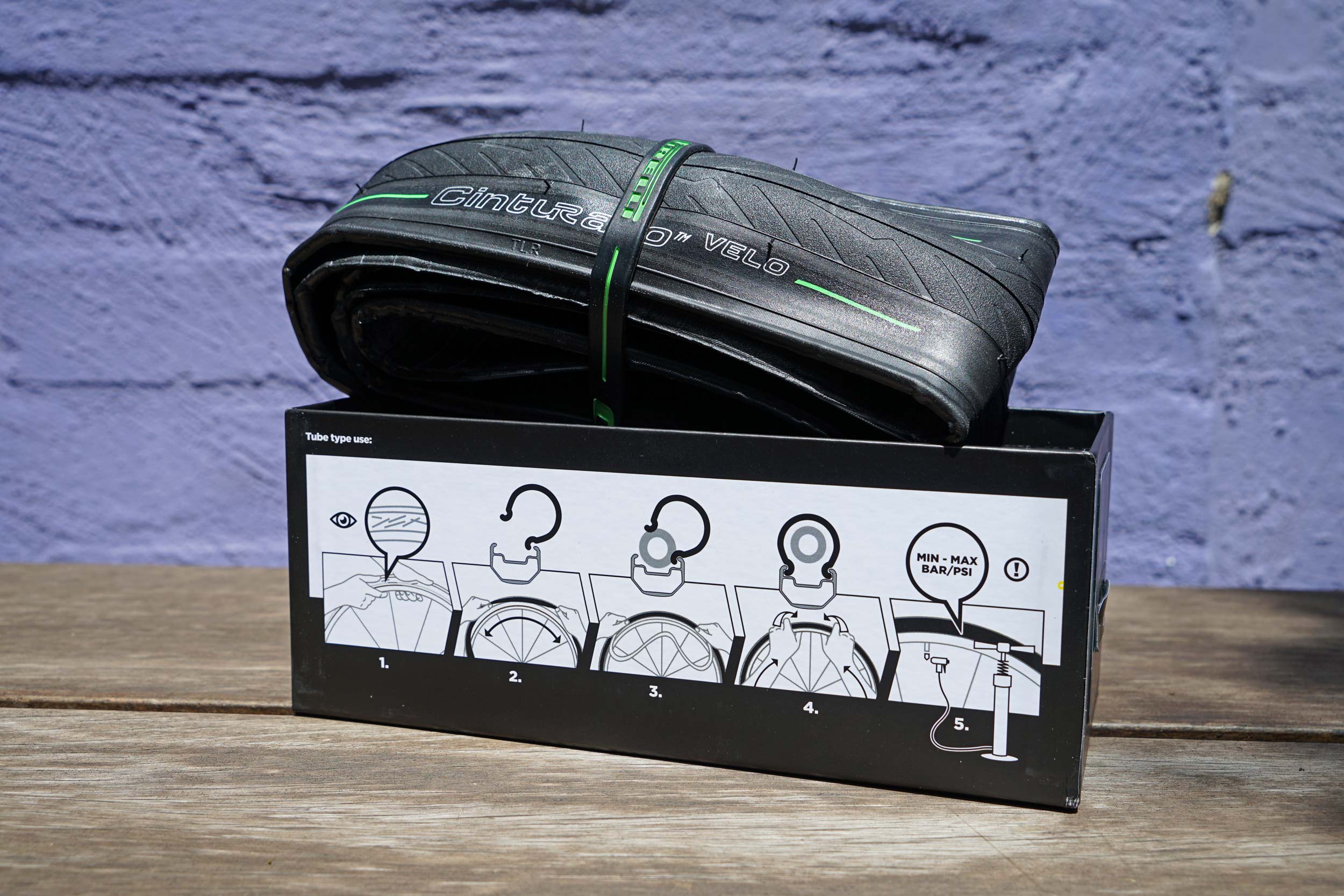
On alternate sides of the Pirelli packaging, you get instructions for fitting tube or tubeless tyres.
I’ve ridden the 26mm before and it’s a suitable compound and tread for the kind of riding I do, but the 32mm have been chosen because I want to go for a bigger bag tyre – as per current trends.
Note: on my personal bike (yes, the Focus Izalco that features regularly) I’ve been using Pirelli P-Zero Race tyres for a little over 1,000km. They are fantastic! They are so good, in fact, that I’ve made a series of videos about them.
The clip below is part 1, about swapping from Continental cream sidewall TDF edition tyres to the black sidewall option that I don’t imagine I’ll be changing for some time. I love them.
NOTE: The P Zero Race (featured in the video above) now sit as the flagship tyre model in the Pirelli P Zero cycling family. According to the Australian agent’s Pirelli brand manager, “they are completely new – compound/tread design and construction/casing and aesthetics”. Oh yeah, and there’s a new solid logo and textured sidewall too…
Pirelli Cinturato highlights
Upon ordering the tyres for the Cervélo review bike, and in an attempt to understand how supply chain issues are affecting the Australian market during the pandemic, I spoke with FE Sports’ Pirelli brand manager, Tanya Booker. She happily explained why the 32mm tubeless Cinturato tyres would be a good fit for the Caledonia Project.
“The Cinturato is a performance tyre with ‘bead-to-bead’ puncture protection,” said Booker.
“They ideal for people who do endurance road riding through to light-use gravel.
“It does have a pretty slick appearance to the tyre. It does have some cut-aways in there for a little bit of grip and clearing of moisture and the compound has a feature which is called ‘anti-flinting’.
“It’s designed for people who want to ride off road; when you’re changing from off-road to road, the dirt does not stick to the tyre, so when you come back onto the tarmac, you don’t have to take it easy for a few corners and wait for that dirt to come off the tyre before you start cornering like you would on your road bike.”
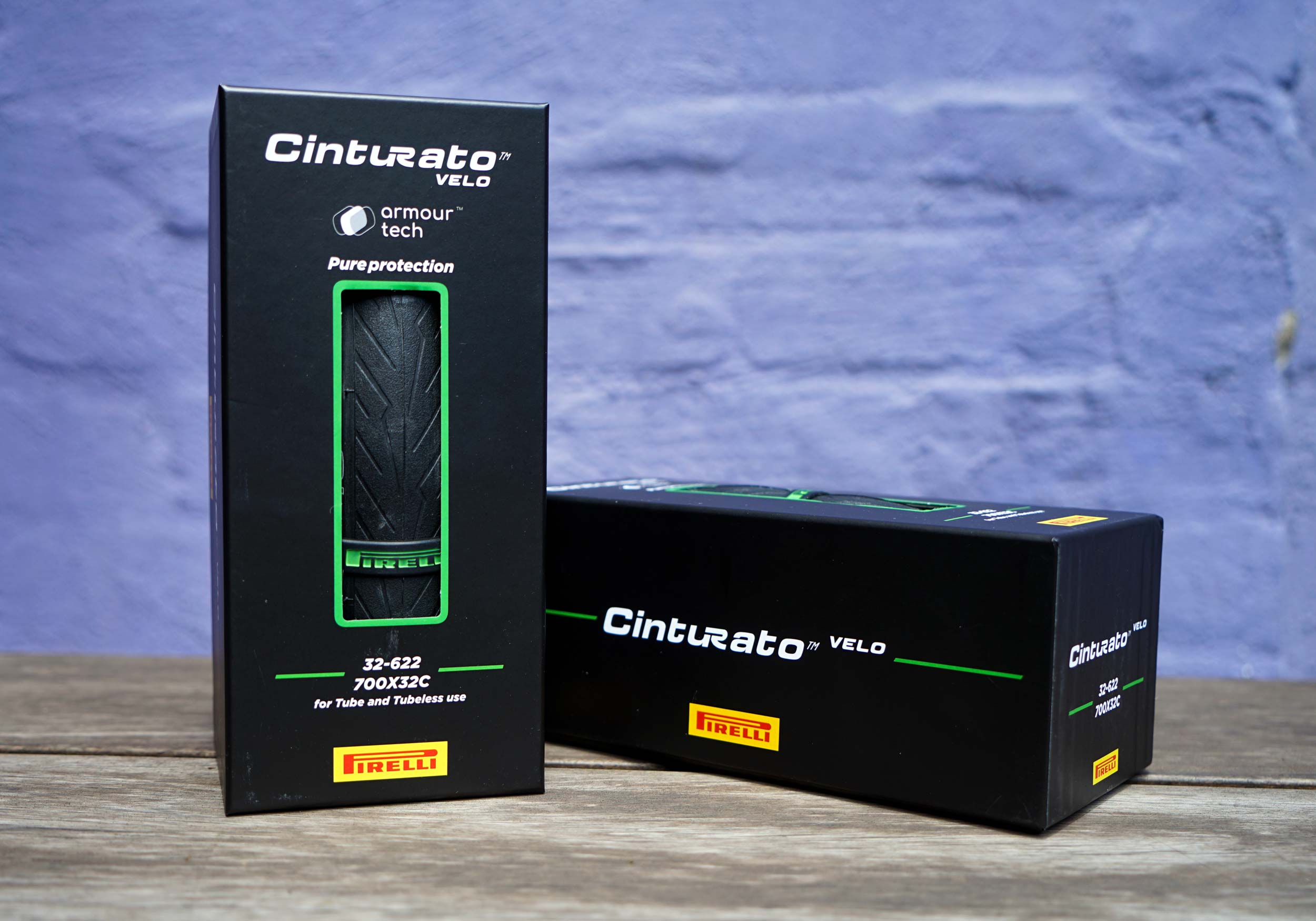
The RRP for Pirelli Cinturato 32mm tyres (in Australia, in November 2020) is AUD$94.95.
So, I wondered, is that a Pirelli-specific compound and how did they ‘discover’ this anti-flinting? “It’s ‘Pirelli know-how’, as they call it,” replied Booker. “It’s taking quite a few years of development to come to this.
“Pirelli use the same engineers to develop the bicycle tyre range as they do for their Formula-1, motocross, motoring portfolios – the whole range of Pirelli tyres.”
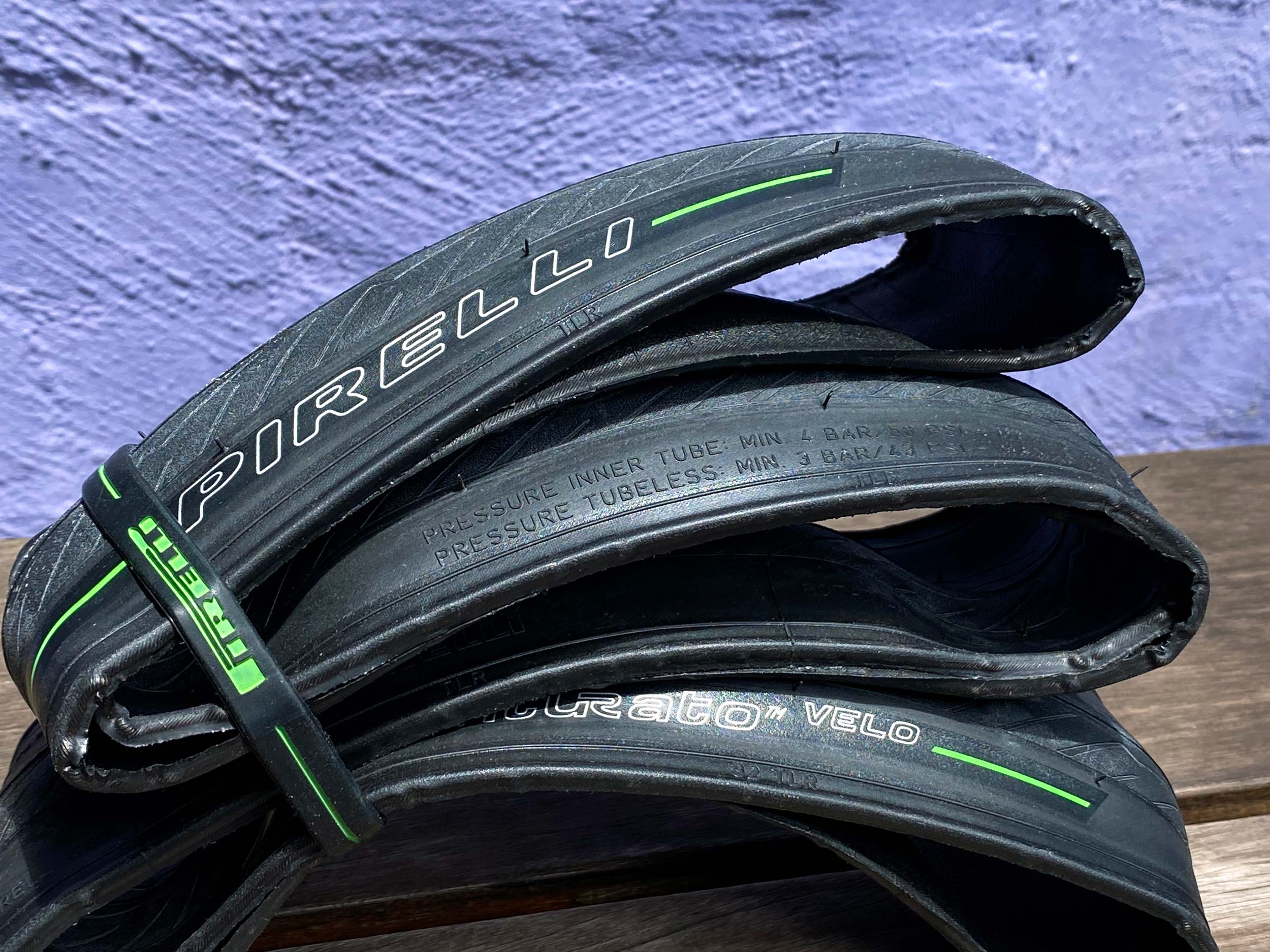
Pirelli and the cycling market
It’s obvious that there is renewed interest in the cycling tyre market with Pirelli just one of several companies expanding their range to include bikes. So, I asked Booker, what is the catalyst for this expansion?
“Pirelli aims to be one of the top three cycling tyre manufacturers in the world and they want to make the best product possible. There’s a lot of pride associated with the brand and they will not put their name on something that they do not believe meets the Pirelli standard.”
The growth of the cycling market has been steady in recent years and the pandemic has prompted quite a spike in sales for bikes and products. Pirelli recognises this growth market and it’s responding accordingly.
“Pirelli rejoined the ‘race’ for bicycle tyre sales because they looked at what was available on the market and they believed, with their ‘know-how’ that they could do it better,” explained Booker. “As a brand it has invested heavily into cycling and it had already made a commitment to spending on R&D for the next five years, even before the pandemic.”
Coming soon: the #ProjectCaledonia workshop sessions… including fitting tubeless tyres.
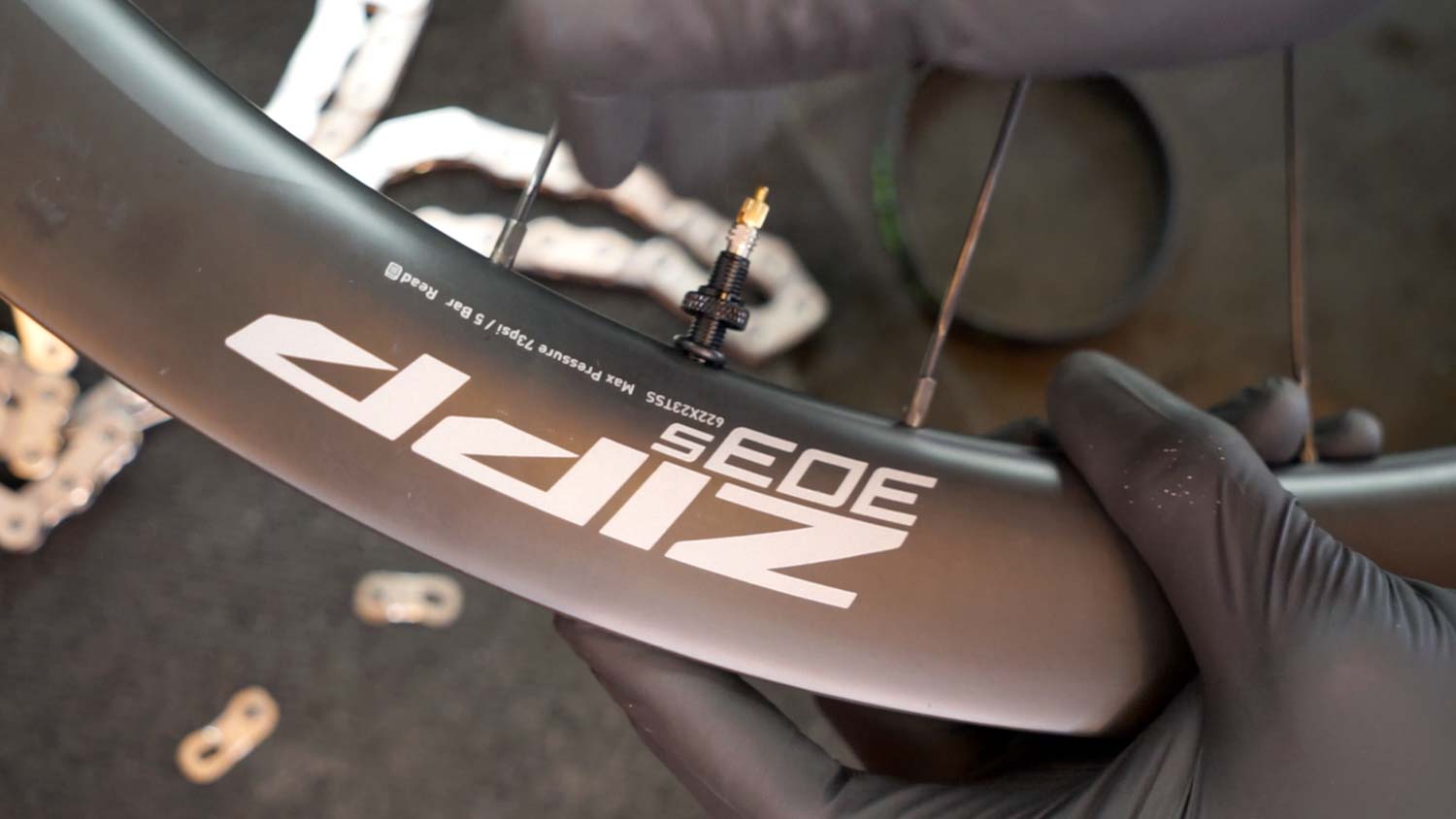 |
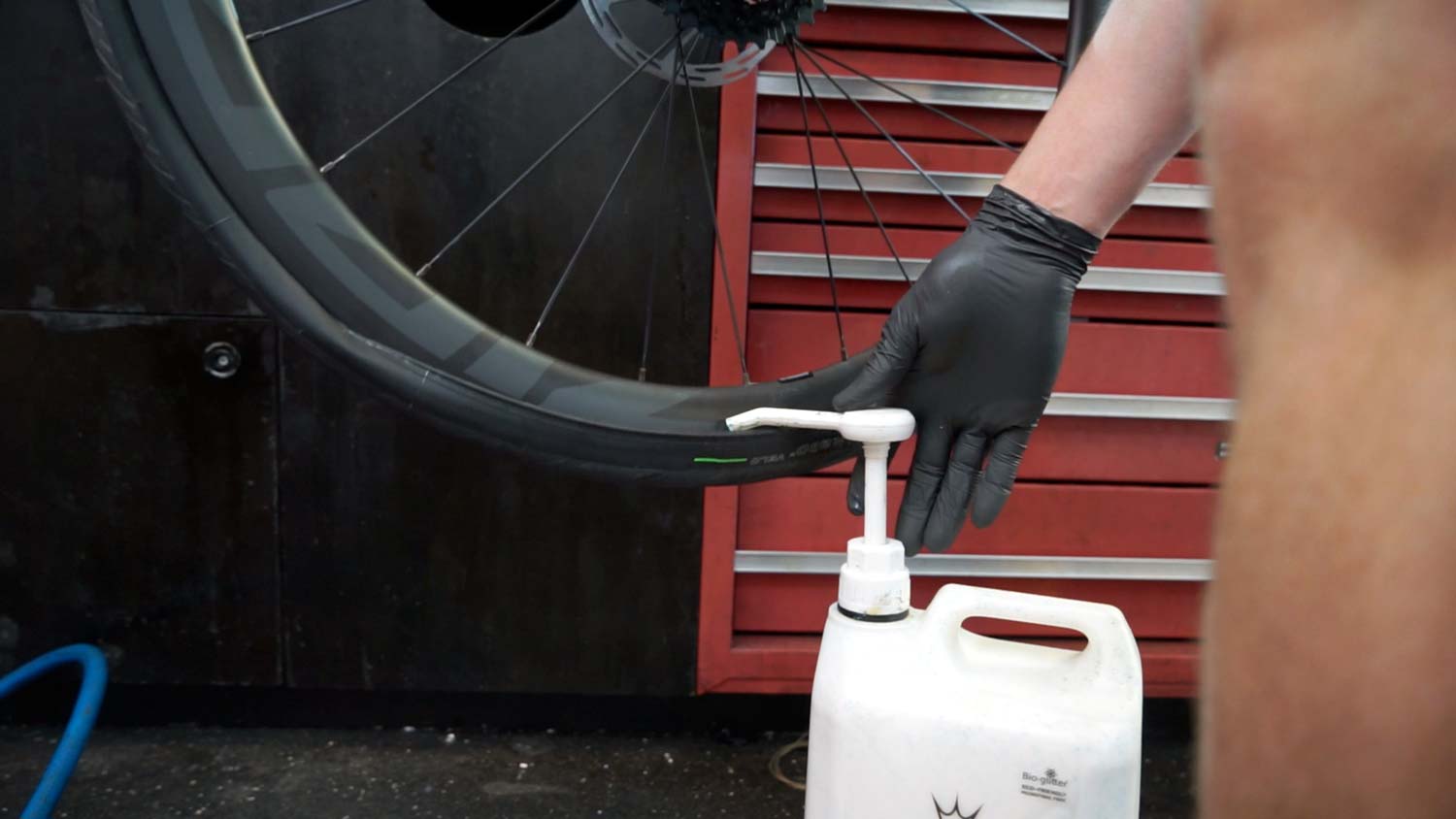 |
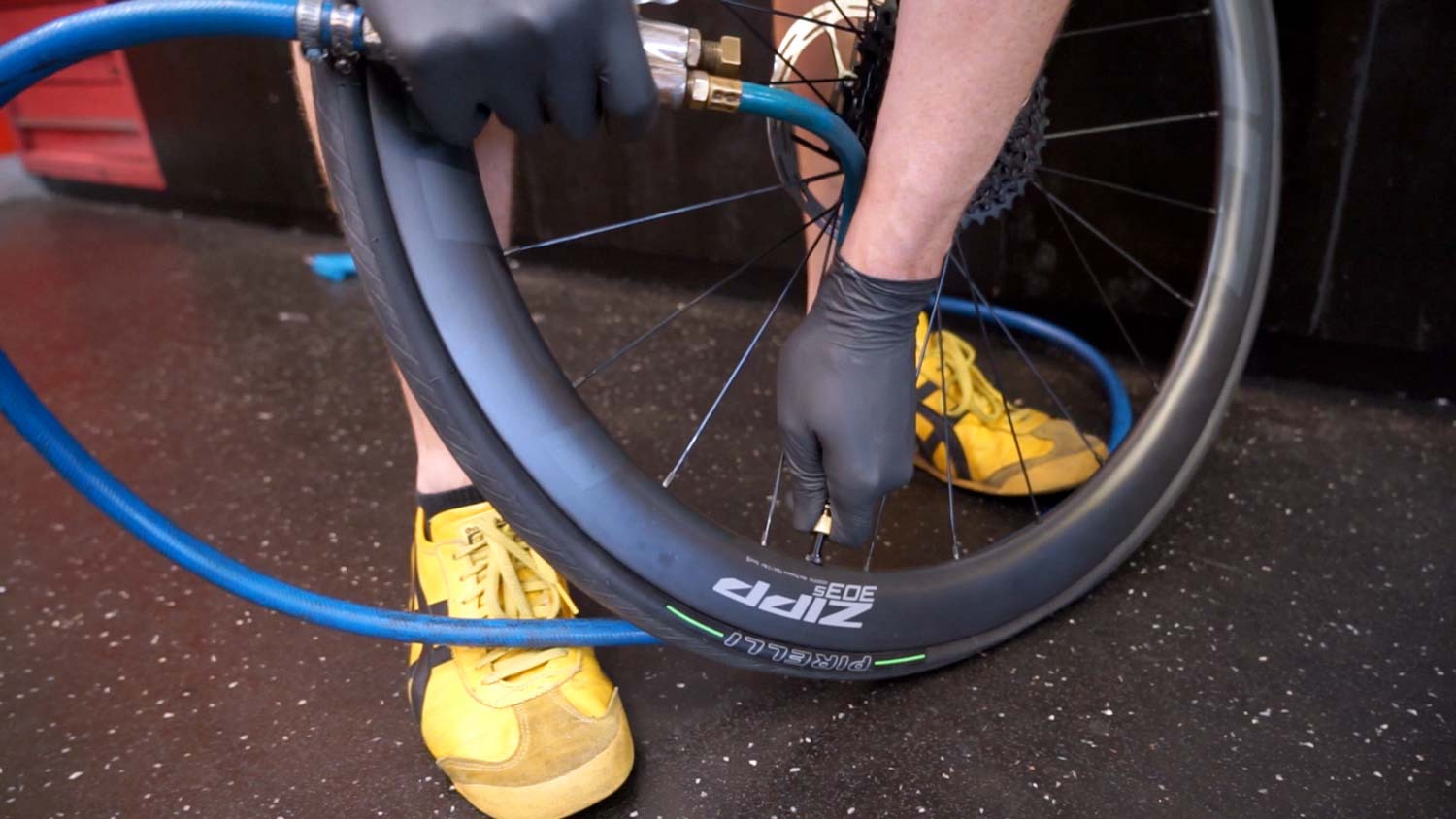 |
Tubeless: will it take off on the road?
RIDE Media’s audience is usually road cyclists who have been rather coy about the uptake of tubeless tyres. Is this changing in 2020? “I think there is a lot of confusion out there over tubeless,” says Booker. “There are a lot of benefits of running tubeless for road, definitely. But, unfortunately, I think that – to start off with – there weren’t a lot of wheels that were compatible.
“Then, in the early days, depending on the sealant that was used, there was a lot of misconceptions between both consumers and bike shop mechanics. And I still think there’s a massive amount of growth on offer for tubeless tyres in the market.
“Even in the last 12 months, the consumer acceptance to tubeless tyre use is increasing but I don’t think we’ve seen anywhere near the potential in the market space for tubeless road tyres.”
– By Rob Arnold
Related links – RIDE Media content:
- Continental GP5000 TDF Collection cream sidewall tyres (+ SciCon Aerotech sunglasses)
- Continental GP5000 ‘TDF Collection’, ‘Reader Review
- Campagnolo Shamal carbon disc wheels – mixing Campag 12-speed with SRAM AXS (+ Goodyear Eagle F1 tyres)
- Ride impressions – 32mm Continental GP5000 tyres, 2021 Trek Emonda
- Trek Emonda 2021 – tyre swap: do 32mm Continental GP5000 fit?
- Bontrager Aeolus RSL 37 wheels (+ Bontrager R4 tubulars)
- Pro team product overview – UAE Team Emirates goes to tubeless tyres in 2020


